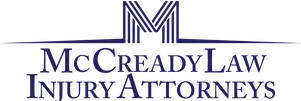
As we grow older, the things we may have taken for granted in our youth become much harder to do. This may include walking independently, using the toilet properly, or even controlling our impulses are all controlled by the brain and muscles which age in tandem with the body. Assisted living is a reality for a lot of families who want their loved ones to receive the best professional care they can get from qualified individuals who went to school for this kind of thing.
Nursing homes regularly use restraints in special cases. That being said, they usually have to ask for and get written permission from the family members of the individual they are caring for. This is a legal requirement because there are so many things that need to be assessed in order to justify the use of restraints.
Here are some of the most common nursing home restraints:
- Bed rails: These are usually found on each side of the bed and are usually fastened onto each edge of the bed, forming a protective barrier. These are useful when it comes to restraining agitated individuals such as those suffering from dementia or residents with mental health issues.
- Sedatives: These are used to calm violent or erratic residents down and must be monitored closely to avoid serious, adverse effects. Good examples here include medications such as Ativan, Haldol and Versed.
- Belts and Cuffs: These are fastened around a resident’s hands and feet, effectively preventing mobility. This is done for individuals who may be a danger unto themselves and others, and they can be periodically used during different times of the day as the staff see fit. In addition, they are fastened on to a bed and chair, making it impossible for residents to break free even if they put up a fight.
Are Nursing Home Restraints Necessary?
There’s a lot of controversy around nursing home restraints due to their perceived unethical use and excessive use. It can be argued that some nursing homes use these restraints as a way of controlling the patients when staff is overwhelmed due to understaffing. The negligent use of restraints can lead to bruising, falls, suffocation, strangulation and suicide by the very restraints that are used for the good of the residents.
Nursing Home Abuse Attorney Help – Call Us Now!
If your loved one was restrained and then suffered severe injuries at a nursing home, you have every right to go after the management via a nursing home abuse lawsuit so you can collect money damages for your loved one. Please call us today on 877-561-3004 for your free and confidential consultation. Thanks for choosing us, and we look forward to hearing from you.

